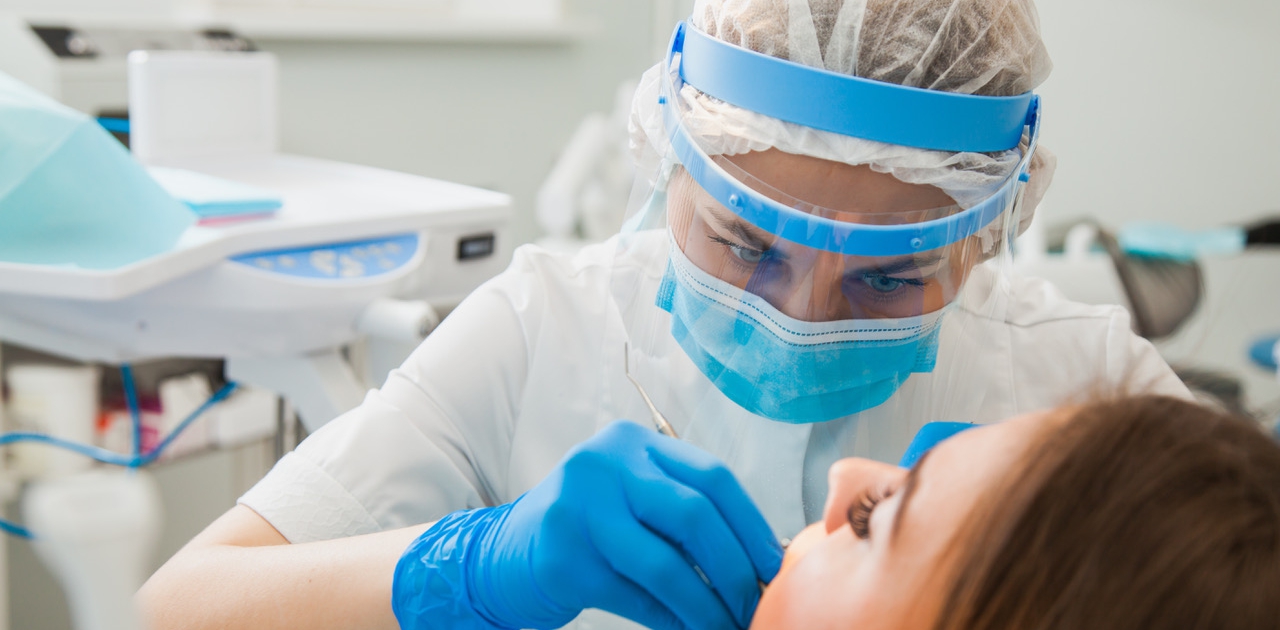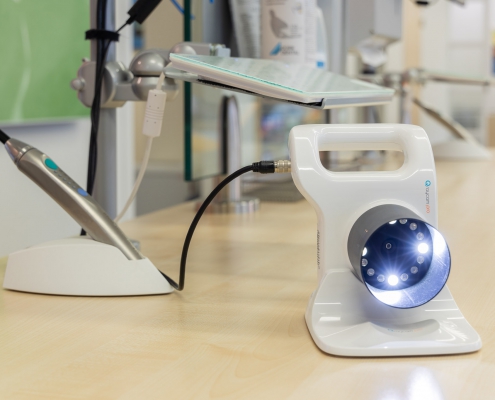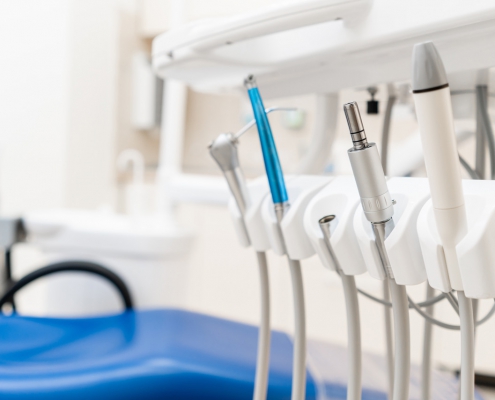Prevention
LIVE IN A CARIES-FREE WORLD
Dental caries is public disease number one. It is caused by a poor diet and poor oral hygiene. Dental caries can be prevented by improving in these respective areas. For an effective approach it is essential to timely detect and quantify the risk of diseases developing, before invasive, irreversible intervention becomes inevitable.
PREVENTIVE INSTEAD OF TREATMENT
Oral Qamera exactly does that. It uses QLF™ (Quantitative Light-Induced Fluorescence), to detect and quantify harmful bacterial activity in the oral cavity and on or in teeth in a very early stage. This makes Oral Qamera the ideal solution to rapidly assess the risk of developing dental caries and oral care effectiveness. Using Oral Qamera allows for damage control to teeth by early detection and preventive treatment.
A COMPLETE PICTURE
Oral Qamera enables measuring the effectiveness of preventive treatment, or the lack of it, thus allowing for treatment adjustments before permanent damage occurs. It ensures that care, both at home and in the clinic, gets a grip on oral health.
HOW DOES QLF™-TECHNOLOGIE WORK
QLF™ uses fluorescence. Fluorescence is a property of specific substances, fluorophores, which absorb light of a specific color and emit it again as light of a different color. By blocking the light of the original color with a filter, the fluorescence image remains: the image that is created by the light emitted by the fluorophores. QLF ™ uses 2 types of fluorophores. Porphyrins that are produced by bacteria and fluoresce red and fluorophores that are at the boundary of tooth enamel and dentin and fluoresce green. The red fluorescence is a measure of harmful bacterial activity and the green fluorescence makes small damage to the tooth enamel visible. Together with a special filter, this produces the QLF ™ image.
In a QLF image the contrast between clean and infected tissue and between healthy and damaged enamel is much greater than in an image with white light illumination. QLF images allow any person to see whether teeth are healthy or not. The degree of contamination and the extent of the enamel damage can be measured at any time and those measurements can be used to assess the development of oral health over time. Because the method is very sensitive, preventive actions can be taken before it is too late.
ORAL QAMERA IN A NUTSHELL
- Illuminates teeth with blue light at a peak frequency of 405nm.
- Displays cariogenic bacterial activity through fluorescent light and a filter instead of chemical dental plaque detection agents – Facilitates early detection of oral anomalies
- Quantifies dental plaque, calculus, carious, lesions, leaking restorations and dental cracks
- Enables quantitative and longitudinal monitoring of demineralization and remineralization processes
- Greatly improves patient compliance
THE DIFFERENCE BETWEEN DENTISTRY AND ORAL CARE
In the Middle Ages, dentistry was exercised by barbers and general physicians. Dentistry evolved into a self-contained science between 1650 and 1800. The 17th-century French physician Pierre Fauchard is considered to be the founder of modern dentistry. He made extensive use of prostheses, filled decayed teeth and postulated that acids derived from sugars are the cause of dental caries. Dentistry has been focusing on curing dental diseases rather than preventing them. With the arrival of Oral Qamera technology true prevention of dental diseases is finally at hand. The differences between dentistry (cure) and oral surgery (care) are:
Cure
- Old style oral care
- Invasive
- Primarily aimed at solving a dental problem
- Ad hoc act as a treatment strategy
- Provides the wrong incentive: drilling is lucrative for the practitioner
- Not verifiable for the insurer
- A large percentage of the population goes to the dentist with an anxious feeling (e.g. 40% in the Netherlands)
- Poor oral health has a major impact on general health and thus on socially supported healthcare costs
- Does not provide a reliable method for recording and monitoring developments in oral health
- Does not provide an objective system to measure / assess the quality of invasive practices
- Does not provide an incentive from the government and other organizations for self-management of oral
- health
- You brush because you have to
- The patient is completely dependent on the practitioner
- The patient has little or no influence on the treatment
- Makes everyone insecure
Care
- New style oral care
- Preventive
- Primarily aimed at preventing problems in the mouth
- Leads to a long-term and personal care plan
- Preventive treatment is equally lucrative for the practitioner in the long term
- Patient file is completely recorded and transparent to consumers and insurers
- Consumers no longer have to fear the dentist
- Good oral health prevention will lead to an increase in general health and an annual saving of 36 billion euros within the EU on all curative caries-related costs. Not to mention the medical costs related to poor oral health, such as rheumatism, Alzheimer’s disease, cardiovascular disease, stomach/colon cancer
- Provides an objective method to measure and improve the quality of oral hygiene and oral care
- You brush with visible effect
- The consumer can better assess a treatment proposal from the dentist with the help of understandable images
- Consumer is in control of oral health
- Consumer becomes empowered
- Gives everyone self-confidence
SEVEN REASONS TO CHOOSE FOR ORAL QAMERA
- Innovative solutions for prevention, treatment and evaluation
- Safe optical technology, without harmful radiation, clean and easy to use
- An accurate picture of oral health throughout a person’s lifetime
- The first structural solution to minimize invasive action
- Reliable and comprehensible information gives the practitioner and patient more self-confidence
- Patented and validated by more than 400 scientific articles (gold standard for scientific research on caries and oral health)
- Approved by the Dutch Healthcare Authority (NZA) with a reimbursement code




